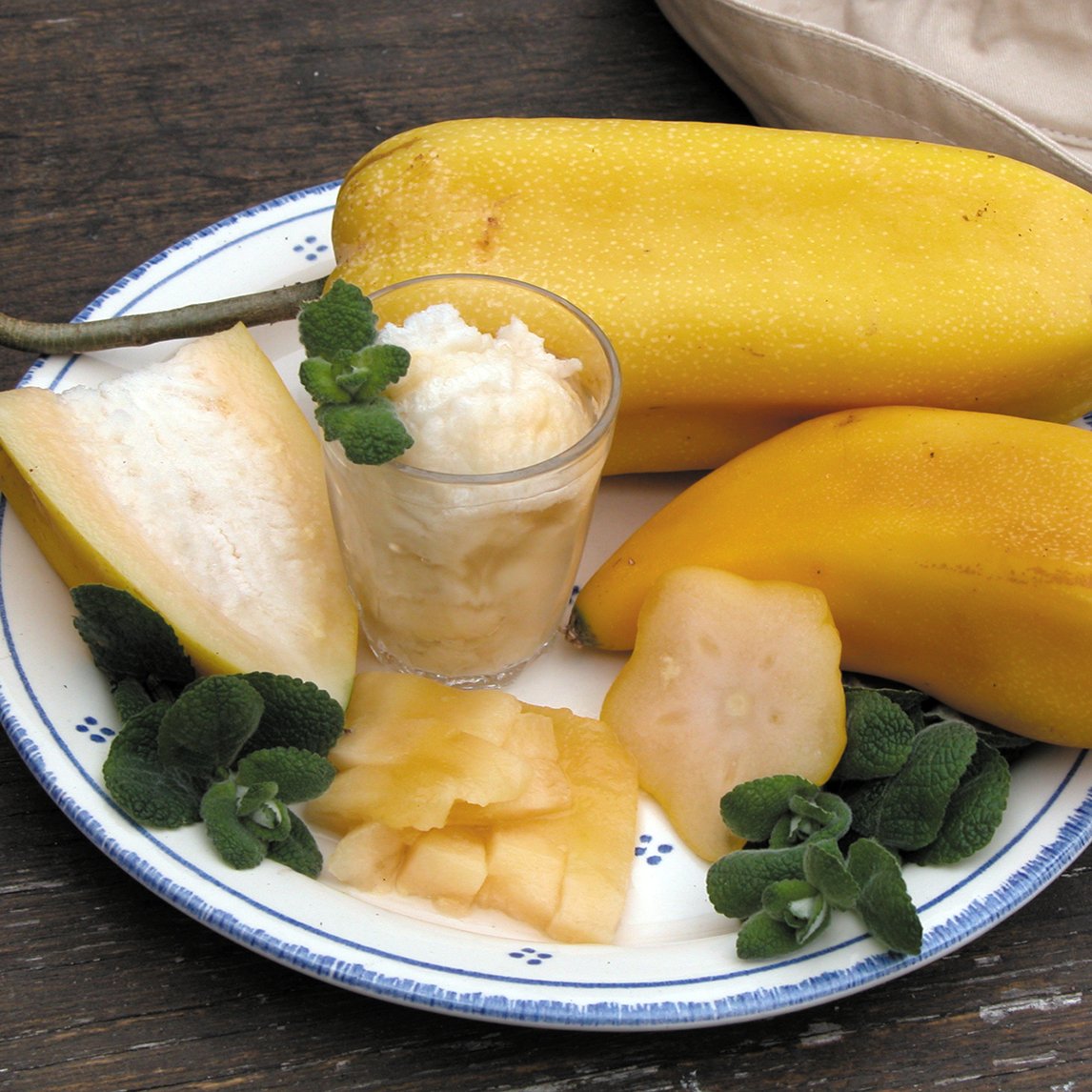Babaco - Champagne Fruit
Babaco is a versatile, self pollinating plant from the paw paw family that will happily fruit in frost free cooler zones. Winter temperatures may cause their lush leaves to shed and they will benefit from protection from frost and wind. They will however bounce back as the weather warms and reward you with fruit from their second year. Plant in a part sun position in pH neutral soil with excellent drainage. Fertilise with a balanced complete fertiliser during the growing season, mulch and water well to keep this productive plant happy. Ensure mulch does not touch the stem. Babaco does not tolerate salinity or grey water. Fruit ripens from green to yellow and can be picked when not fully mature to ripen off the tree. Pick lowest fruit first. Any base side shoots should be trimmed off, leaving one major trunk for maximizing fruit set. Allow only one side shoot to grow into a replacement plant as original plant looses its vigour, usually after 3 or 4 seasons. Spent stems should be cut back to the base.

